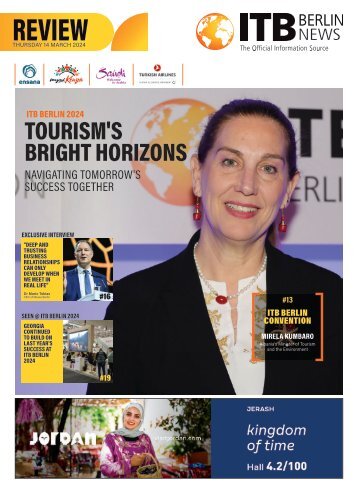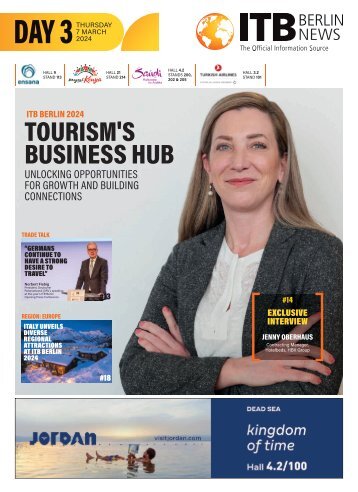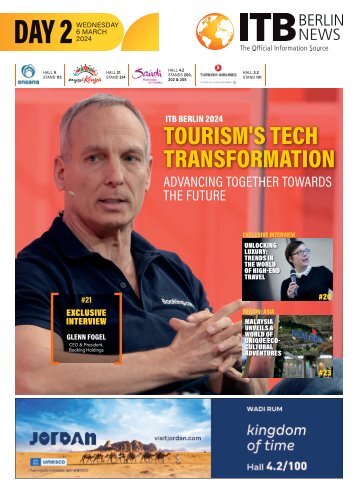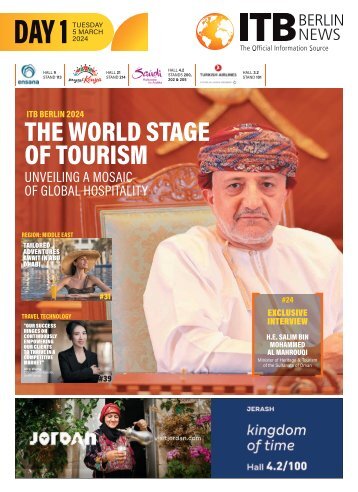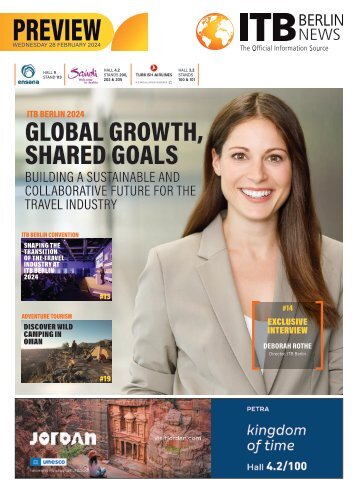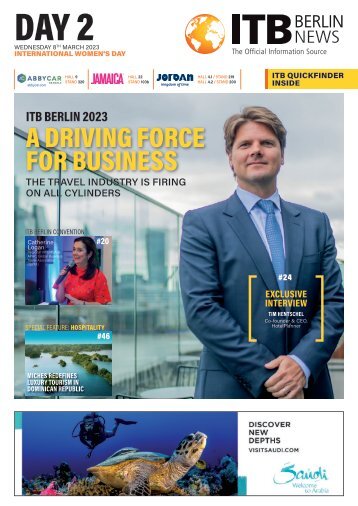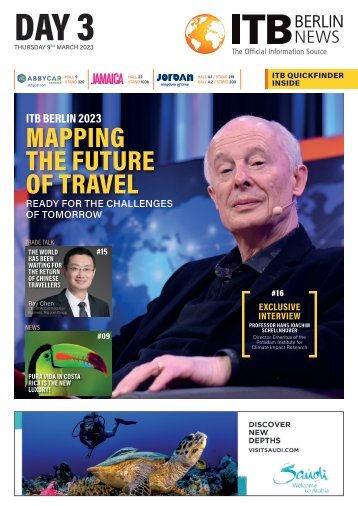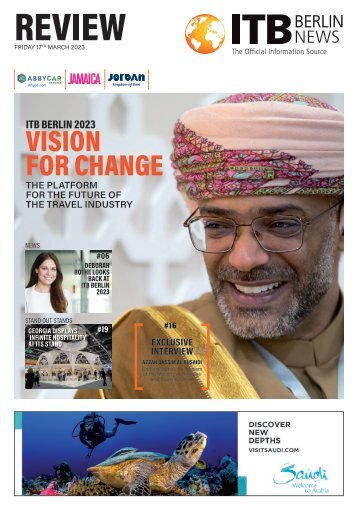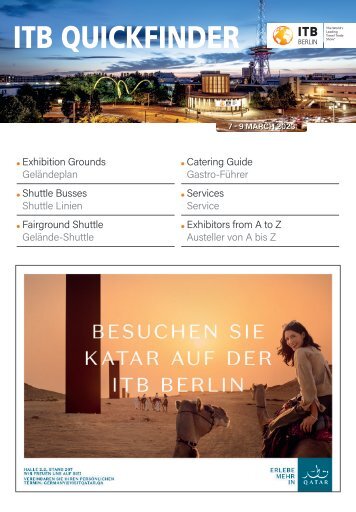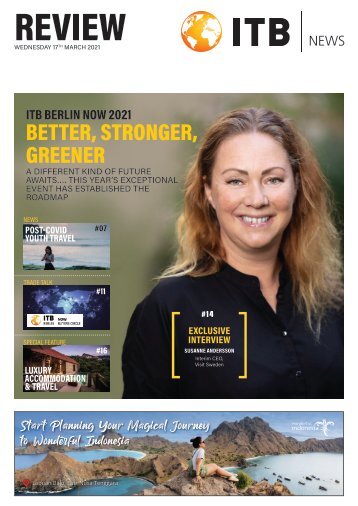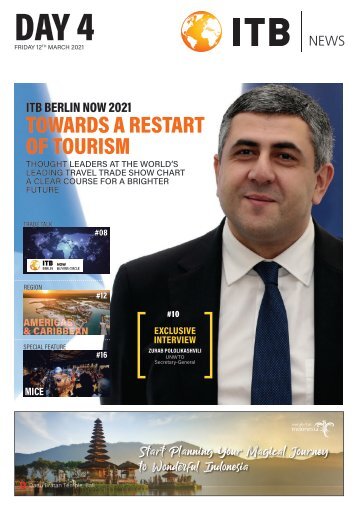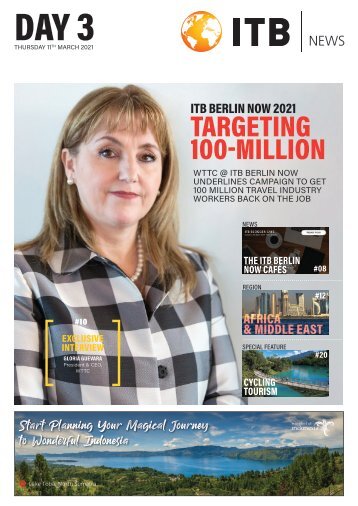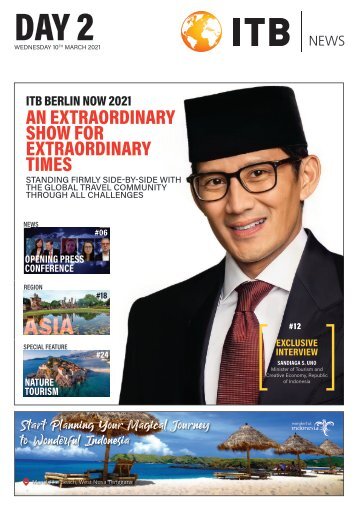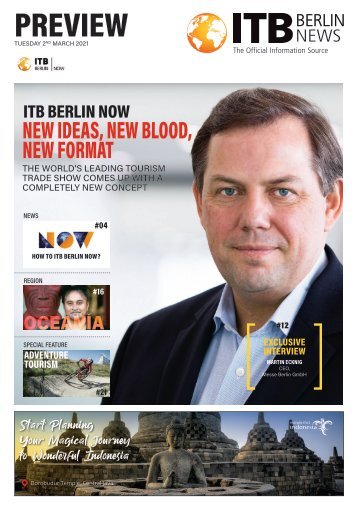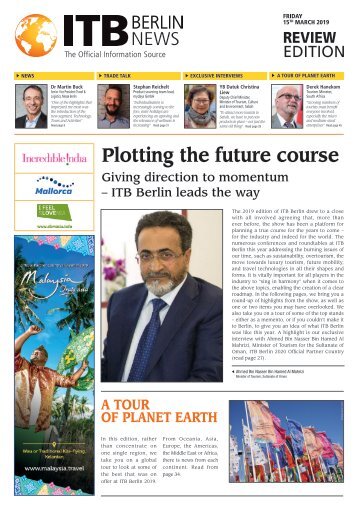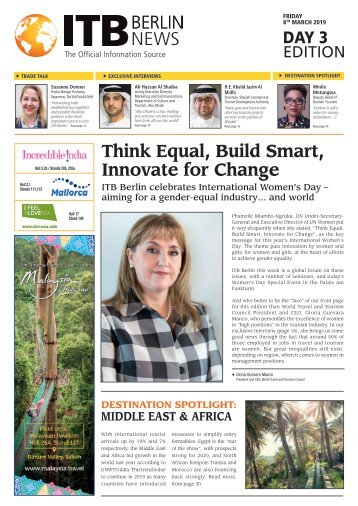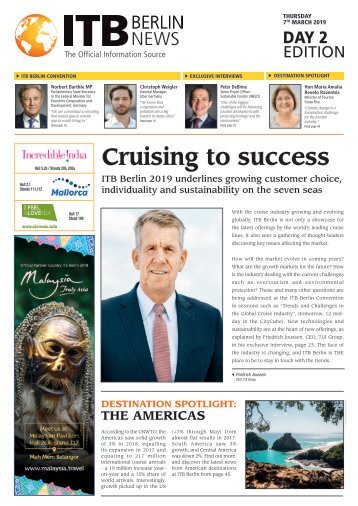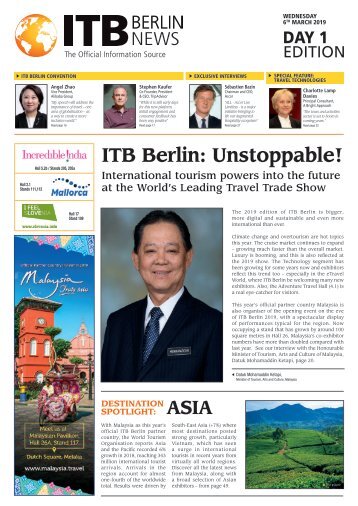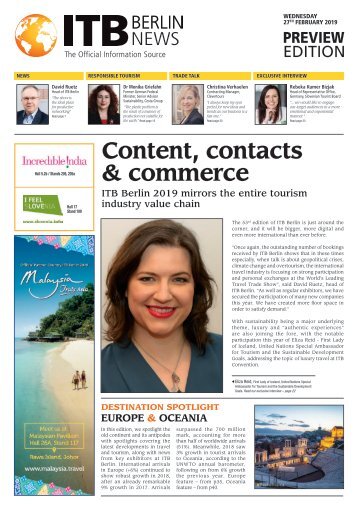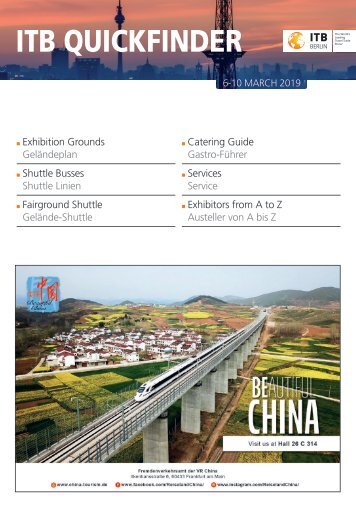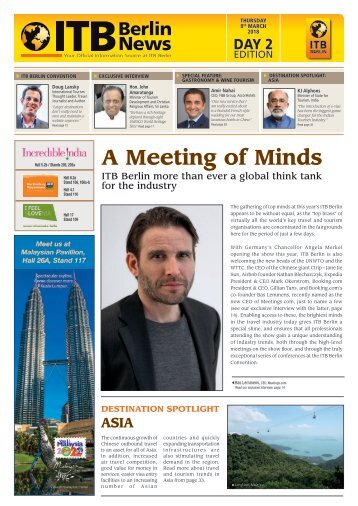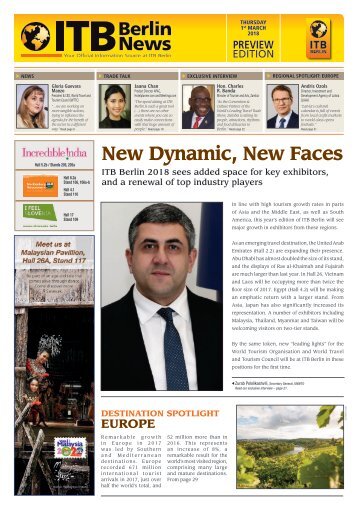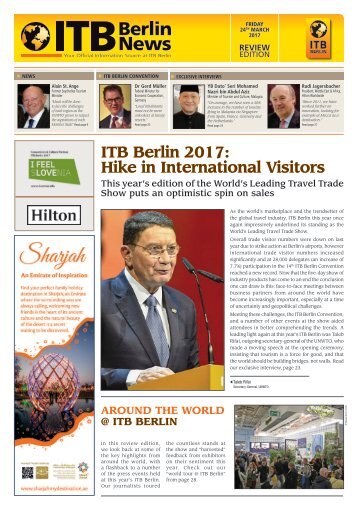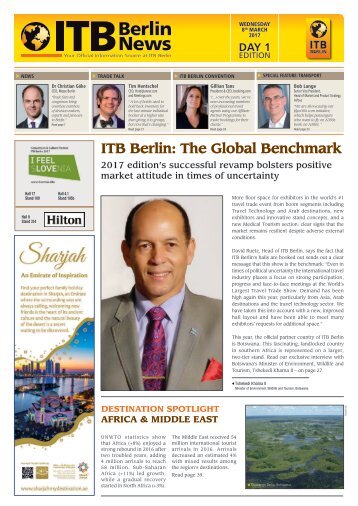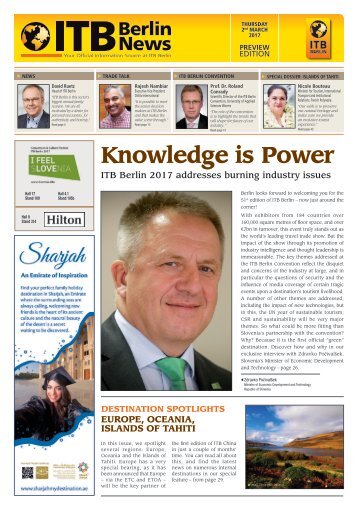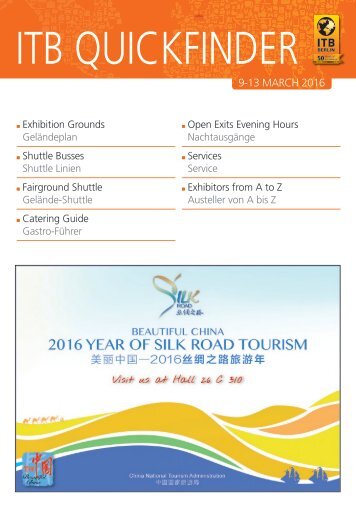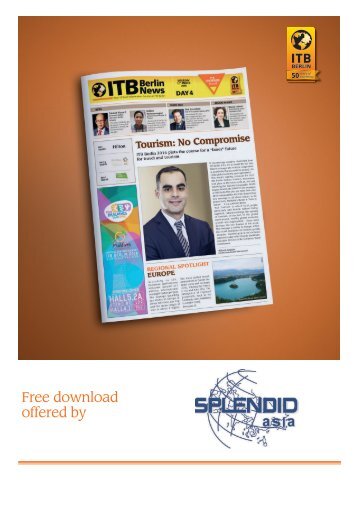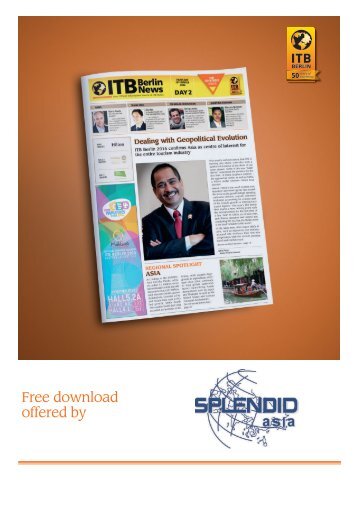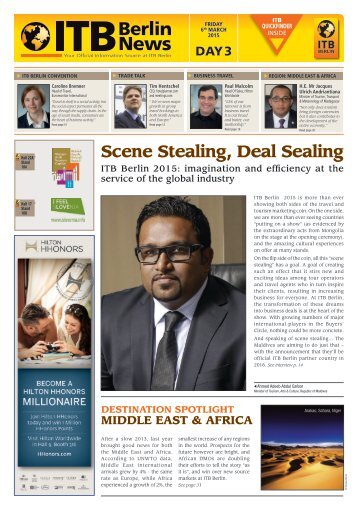
ITB Berlin News - Day 2
- Text
- Tourism
- Berlin
- Destinations
- Maldives
- Hotels
- Luxury
- Destination
- Global
- Arrivals
- Tourists
20 SPECIAL FEATURE
20 SPECIAL FEATURE MEDICAL TOURISM ITB Berlin : Taking The Pulse of Medical Tourism While medical tourism products have regularly appeared at ITB Berlin previously, the sector has not warranted its own dedicated space until now. The establishment of the Medical Tourism Pavilion in Hall 3.2 demonstrates how quickly the market has grown, and its significance to the global tourism industry. Travelling abroad for medical reasons is no longer simply a question of South Korea’s Medical Tourism Swells According to a recent report by Research And Markets, the South Korean medical tourism market is likely to reach nearly billion by the end of 2022 growing at an annual rate of around 15% from 2017. Market growth can be attributed to factors such as technologically advanced treatments and medical procedures, pioneering work in cosmetic surgery and dentistry, excellent medical practitioners, seeking treatments based on geographical availability; it has become a highly-competitive sector in its own right, with everything from cosmetic surgery and dentistry to dialysis and fertility treatment catered for within bespoke travel packages. ITB Berlin 2017 is the beating heart of this global phenomenon Medical Pavilion - Hall 3.2a medical facilities, affordable m e d i c a l c o s t s a n d s t r o n g government support and initiatives. Chinese medical tourists play a significant role, contributing more than 35% share in 2016 revenue to the South Korean economy, while Japan, Russia, Kazakhstan and UAE also provide the country’s medical tourism a healthy income The Global Surgery Is Open Speaking to ITB Berlin News, Thomas Bömkes, Managing Director, Diversity Tourism GmbH, explained why the Medical Tourism sector is becoming so important. Medical Tourism helps people from around the world enjoy cost-effective world-class quality medical care anywhere in the world. Over recent decades many destinations have emerged as medical and healthcare tourism leaders. Some factors contributing to the growth of Medical Tourism are higher costs, long waiting lists, restrictive medical insurance policies, healthcare infrastructure and political regulations. In your role as ITB Berlin’s Medical Consultant, what is on offer for 2017? For our first edition of the Medical Tourism Pavilion in hall 3.2a, we are lucky to have some great exhibitors from different countries with us like Turkey, Poland, Belarus and the UAE. We have workshops on Wednesday during the ITB Leisure-Trend-Forum in hall 4.1. And on Thursday in the Medical Tourism Pavilion, we have presentations with our partners from Portugal, Croatia and our exhibitors, plus educationals and networking opportunities. What are the future projections for the sector? Thomas Bömkes Managing Director Diversity Tourism GmbH The current turnover of the world’s medical tourism industry is around 9billion. Over the next ten years overall growth is forecast to reach up to 25%. During the same period, it is predicted that up to 4% of the world’s population will undertake trips motivated by offers of medical treatment. ITB Berlin aims to highlight this growth market and all its aspects and provide buyers and providers this new platform on a global stage DXH Initiative Boosts Medical Tourism In Dubai The medical tourism sector in Dubai has undergone rapid recent growth as the city has adopted and implemented the latest technologies in the healthcare sector ensuring world-class medical service. An integrated programme called Dubai Health Experience (DXH) was launched in April 2016 by His Highness Sheikh Hamdan bin Mohammed bin Rashid Al Maktoum, Crown Prince of Dubai, as a continuation of the ‘Dubai, a Global Destination for Medical Tourism’ project. It targets half a million international patients by 2020. As one of the four most-visited cities in the world, DXH works to cross-promote Dubai’s existing tourism infrastructure and attractions with its 35,000 health specialists at 3,000 private health facilities ranging from hospitals and clinics to day surgery centres. Among its many award-winning innovations, the pioneering DXH mobile app has been designed to allow medical tourists quick access to information about hospitals and clinics, doctors and DXH medical packages at their convenience
ASIA REGION 21 MAIN TRAVEL DESTINATION Asia Continues to Power World Tourism Growth Tourism in the east continues to prosper - stimulated by Chinese outbound but also new emerging outbound markets such as India & Indonesia ASIA AZERBAIJAN HALL 3.1 / 600 All international organisations dealing with tourism - UNWTO, WTTC or PATA just to name a few - agree on one fact when looking at Asia. The continent definitely drove international tourism growth across the globe in 2016 and it should still be the driving force for the tourism industry in 2017. According to PATA (Pacific Asia Travel Association) forecasts released in early March, Asia recorded 433.3 million international arrivals last year, a growth of 3.2%. C o u n t r i e s i n t h e P a c i f i c added another 24.2 million international arrivals, up by 6.8% compared to 2015. First estimates from the UNWTO put the increase in tourist arrivals for Asia-Pacific at 8% last year with an estimated total of 303 million. However, UNWTO figures count separately arrivals to the Middle East - which are geographically part of the Asian continent. PATA indicates that 82.6% of all travellers in Asia came from within the continent, the equivalent of 357.7 million arrivals. Europe continues to be the second largest source market towards Asia, which PATA estimates at 9.8% of all arrivals, or 42.3 million travellers. The Americas arrived in third position, with a volume of 16.4 million travellers, or a market share of 3.8%. CHINESE DOMINANCE Asia’s tourism “leap” is due above all to the extraordinary push of Chinese tourism. Between 2010 and 2016, Chinese outbound trips almost doubled from 70 million six years ago to an estimated 130 million travellers last year. Asia has naturally been the first to benefit from China’s travel fever. In many Asian countries, Chinese tourists are number 1 – or at least in the top three. By example, last year saw 8.5 million Chinese travellers visiting Thailand, representing a total market share of 25%. Chinese were also number one in South Korea (8.06 million tourists or a market share of 55%), in the Maldives (0.32 million or a share of 25.2%). Chinese are number two in Singapore with 2.86 million arrivals in 2016, up by 36%. The Chinese figure was only 30,000 visitors short of Indonesia, still Singapore’s number one market with 2.89 million arrivals. Expect however that China could become Singapore’s largest source of visitors in 2017. Asia’s tourism boom is unlikely to stop anytime soon. Not only China is a driving engine to growth on the continent. India but also Indonesia and now Vietnam are perceived as strong emerging outbound markets with a ripple effect on their neighbours. PATA forecasts until 2021 an average annual growth rate of 5.8%. It will then bring total foreign arrivals in Asia to 573.4 million by 2021 BANGLADESH HALL 5.2A / 100 BHUTAN HALL 26.C / 308 CAMBODIA HALL 26B / 225 CHINA HALL 26C / 311 GEORGIA HALL 3.1 / 331 HONG KONG HALL 26A / 107 INDIA HALL 5.2B / 205, 205A INDONESIA HALL 26A / 116, 123 IRAN HALL 7.2A / 100 JAPAN HALL 26A / 129 KAZAKHSTAN HALL 3.1 / 601 KOREA (REPUBLIC OF KOREA) HALL 26A / 135 LAOS HALL 26A / 109 MALAYSIA HALL 26A / 121 MALDIVES HALL 5.2A / 107 MONGOLIA HALL 26C / 313 MYANMAR HALL 26B / 201 NEPAL HALL 5.2A / 116 PHILIPPINES HALL 26A / 101, 134, 136, 138 SINGAPORE HALL 26A / 133 SRI LANKA HALL 5.2A / 111, 112, 114 TAIWAN HALL 26A / 130 TAJIKISTAN HALL 3.1 / 618 THAILAND HALL 26B / 221 VIETNAM HALL 26C / 314 ITB BERLIN NEWS • Thursday 9 th March 2017
- Page 1: THURSDAY 9 th MARCH 2017 DAY 2 EDIT
- Page 4: 4 NEWS France Remains The Most Popu
- Page 7 and 8: NEWS 7 World Travel Monitor Reveals
- Page 9 and 10: TRADE TALK 9 Hopping Around the Pla
- Page 11: ITB BERLIN CONVENTION 11 Dr Lászl
- Page 15: SPECIAL FEATURE LUXURY ACCOMMODATIO
- Page 18 and 19: 18 SPECIAL FEATURE LUXURY ACCOMMODA
- Page 23 and 24: ASIA REGION 23 John Amaratunga Mini
- Page 25: ASIA REGION 25 Targeting Malaysia
- Page 28 and 29: 28 REGION ASIA China Southern Airli
- Page 31: ASIA REGION 31 HE Mr Ohn Maung Unio
- Page 34 and 35: 34 SPECIAL DOSSIER: MALDIVES (Desti
- Page 36 and 37: 36 SPOTLIGHT ON GERMAN REGION: NORT
- Page 38: 38 WHERE TO GO IN Berlin Restaurant
Inappropriate
Loading...
Mail this publication
Loading...
Embed
Loading...
